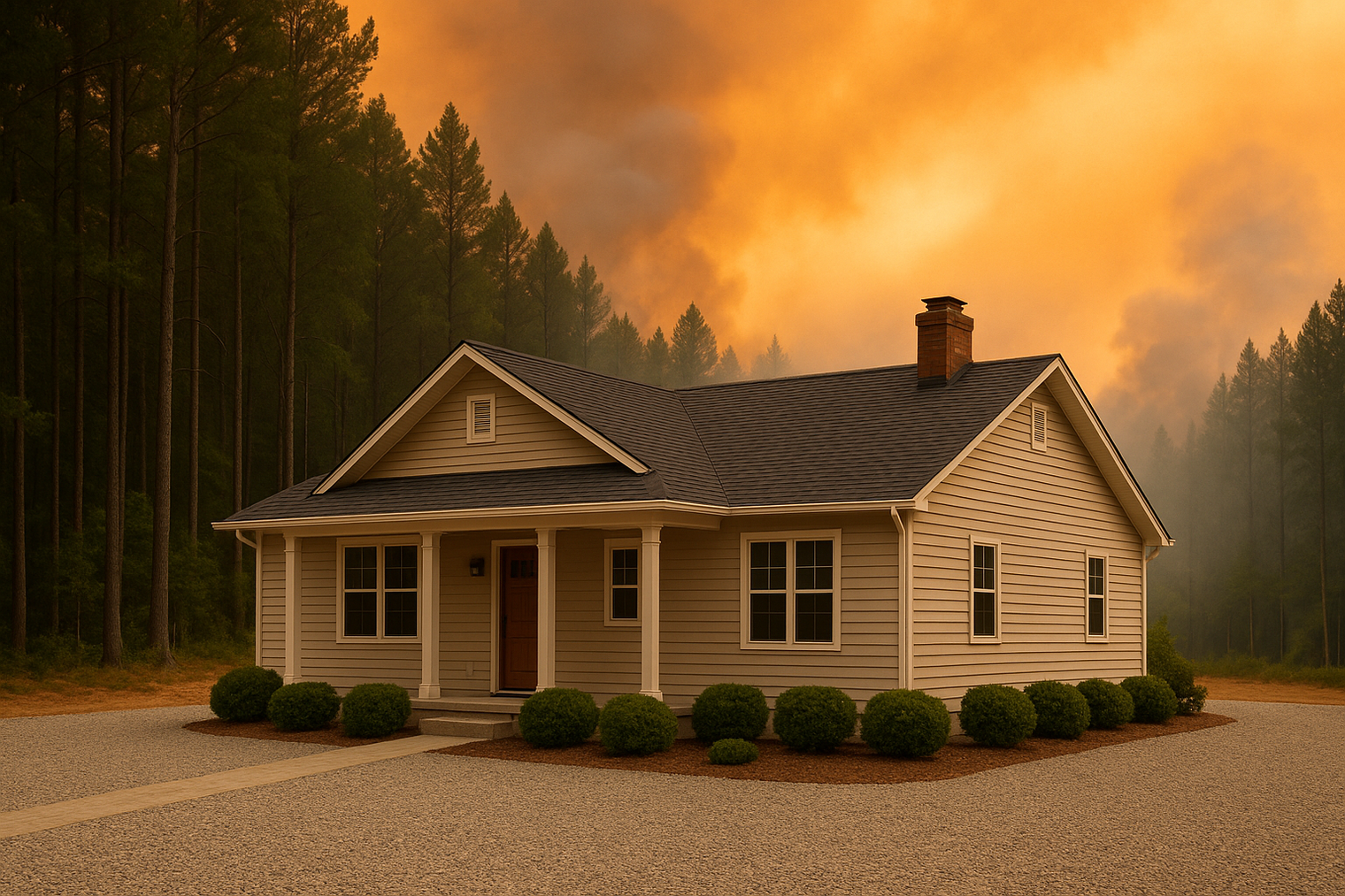As wildfires grow more frequent and destructive, homeowners in fire-prone areas must take proactive steps to protect their property. Fire hardening—or making your home more resistant to ignition from flames, heat, and embers—is one of the most effective strategies to reduce risk.
This guide provides a comprehensive overview of how to harden your house against fire, with practical recommendations for structural upgrades, landscape management, and ongoing maintenance.
Why Fire Hardening Matters
Most homes are not destroyed by direct flames. Instead, the leading cause of home loss in wildfires is windborne embers—tiny, burning fragments that travel ahead of the fire front and ignite structures by entering vulnerable gaps or landing on flammable materials.
Wood-frame houses are especially at risk due to combustible siding, exposed eaves, vent openings, and other ignition-prone components. Fire hardening addresses these vulnerabilities to give your home a fighting chance.
Key Areas of Home Hardening
1. Fire-Resistant Roofing
The roof is often the most exposed part of a house during a wildfire. Replace combustible roofing (such as wood shake) with Class A fire-rated materials, including:
-
Fiberglass asphalt shingles
-
Metal panels
-
Clay or concrete tiles
-
Fire-rated synthetic shakes
Ensure proper edge flashing (drip edge) and keep the roof clear of leaves, pine needles, and other debris. Use metal gutter guards to prevent ember ignition in clogged gutters.
2. Ember-Resistant Vents and Eaves
Vents are common entry points for embers. To protect your attic and crawlspace:
-
Install ember-resistant vents with internal baffles or cover with 1/16–1/8 inch metal mesh.
-
Box in or enclose eaves and soffits using noncombustible materials.
-
Avoid plastic or fiberglass screening, which can melt during high heat exposure.
3. Fire-Resistant Siding and Exterior Walls
Exterior walls should be made of noncombustible or ignition-resistant materials. Recommended options include:
-
Fiber cement board
-
Stucco
-
Brick or stone veneer
-
Metal siding
Avoid untreated wood or vinyl siding. Seal any gaps between siding and framing to prevent ember entry.
4. Dual-Pane Tempered Glass Windows
Windows are vulnerable to heat and radiant energy. Replace single-pane windows with dual-pane glass, at least one pane of which is tempered. This helps prevent shattering from heat exposure.
Install noncombustible window screens to reduce ember penetration and radiant heat absorption. Maintain a clear area around windows, free of flammable vegetation or furnishings.
5. Decks, Fences, and Attachments
Structures attached to your home can act as fire bridges. Mitigate risk by:
-
Building decks with ignition-resistant or noncombustible materials.
-
Removing flammable items from under decks (e.g., firewood, patio cushions).
-
Replacing the first 5–8 feet of fencing where it meets the house with metal or masonry.
-
Clearing vegetation around fences and outbuildings.
Defensible Space: Fuel Management Zones
Creating defensible space involves managing the vegetation and materials surrounding your home to slow fire spread and reduce its intensity.
Zone 0: 0–5 Feet
This is the most critical zone. Keep it entirely noncombustible:
-
Remove vegetation, wood mulch, and flammable decor.
-
Use gravel, pavers, or concrete around the perimeter.
-
Avoid storing items like firewood or propane tanks near walls.
Zone 1: 5–30 Feet
Focus on fuel reduction and plant spacing:
-
Mow lawns to under 4 inches.
-
Remove dead vegetation, leaves, and pine needles.
-
Prune trees to keep branches 10 feet away from structures.
-
Thin shrubs and separate plant groupings.
Zone 2: 30–100 Feet
The goal is to reduce fuel continuity:
-
Space trees and large shrubs horizontally and vertically.
-
Remove ladder fuels (e.g., low-hanging branches over shrubs).
-
Clear fallen limbs, dead wood, and dense undergrowth.
-
Store outbuildings or fuel sources at safe distances with cleared zones.
Fire-Resistant Landscaping Practices
Choose low-flammability, high-moisture plants and arrange them thoughtfully. Avoid plants with resins, oils, or waxy leaves, such as:
-
Juniper
-
Pine
-
Eucalyptus
-
Rosemary
Prefer options like:
-
Succulents
-
Yarrow
-
Daylilies
-
Maple or aspen (deciduous trees)
Use noncombustible mulch—such as crushed stone—especially within 5 feet of the house.
Additional Tips for Fire Preparedness
-
Gutters and Roof Valleys: Install metal guards and clean regularly.
-
Emergency Water Supply: Keep hoses connected and long enough to reach all areas. Consider a backup pump for wells.
-
Home Access: Ensure visible address numbers and cleared driveways for firefighter access.
-
Checklists: Use state or agency-issued home hardening and defensible space checklists for seasonal evaluations.
-
Fire Tools: Keep rakes, shovels, extinguishers, and protective clothing on hand during fire season.
Final Thoughts
No house can be made entirely fireproof. However, comprehensive fire hardening combined with good landscaping practices can dramatically improve survivability during a wildfire. The key is to address both structure and surroundings—building materials, vents, vegetation, and maintenance all matter.
Fire doesn’t wait. Prepare now, and you’ll have done everything possible to give your home the best chance to stand strong.

